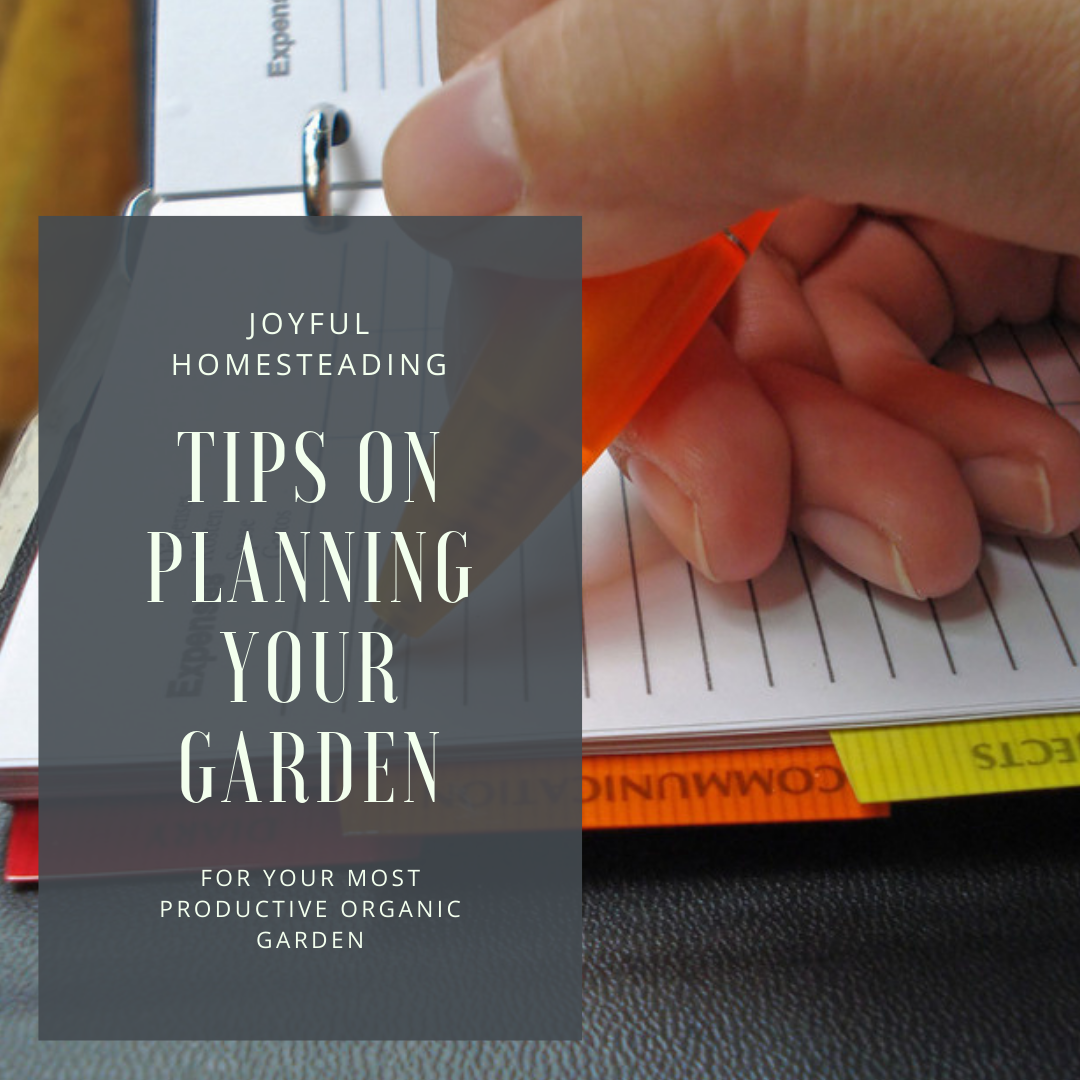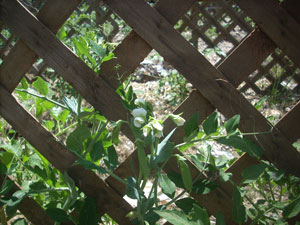Organic Gardening Planning
Organic gardening planning is one of my favorite wintertime activities. When the winds are howling, and your windows are covered with frost, nothing warms the soul quite as well as making plans for your spring garden. Here are some tips to ensure your gardening dreams don't lead to frustration.

Organic Gardening Planning
Should Be Simple
If you have never gardened before, you may be tempted to put in a huge garden next spring. Don't; instead, put in a small garden this year and see how it goes. Otherwise, you might not be able to keep up with the weeds and get frustrated. This was one of my big mistakes with my first garden. I put in a 20 foot by 50 foot garden and was overwhelmed by the weeding and watering it required. My garden looked terrible, half of it got eaten by bugs, and the rest of it died before it could produce anything.

That's why it's important to be conservative in your organic gardening planning. For every 100 square feet of garden space you have, you will need to devote two hours to it per week. That's a little less than 20 minutes a day and manageable for most people. If you plan on devoting half an hour per day to your garden, then put in a garden that is ten feet wide by about 15 feet in length.
Keep it Close By
Until you have a routine established, it will be easy to forget to do the daily weeding and watering, so when doing your organic gardening planning, choose a garden spot that is either right next to your back door, or better still, right next to the path you take to and from your car every day. That way, it will be easy for you to stop and pull a few weeds as soon as you get home from work.
The Best Light
Don't sabotage your organic gardening planning by picking a spot that doesn't get enough light. When we first moved to our present home, the previous owners had already dug a huge plot behind the house. Unfortunately the spot was surrounded by trees and got more late afternoon sun than any other type of light - a disaster in hot Oklahoma summers.
If you live in an area that gets hot, you'd be better off finding a place that gets plenty of morning sun and shade in the afternoon. That way your plants won't burn to a crisp in July while still getting the six or more hours of light they need each day.
Start Building Compost
No matter where you put your garden, you will need to feed your soil for a bountiful harvest in the fall and for years to come. Compost needs to cook at least two weeks in the summer heat and at least two months during the winter, so start building your compost pile now. Better still, provide your garden with even richer nutrients by keeping a worm composter in your kitchen to put those vegetable scraps to good use. And during the summer, save your weeds to make liquid fertilizer.
Give Your Garden a Headstart
While finishing up your organic gardening planning, don't forget to mark on your calendar the best date to start your seeds indoors. Get a simple grow light and heating mat, and you'll have healthy, happy plants you can set outside six weeks later for a stronger garden and a faster harvest.
Grow What You Like
While it is true that some vegetables are easier to grow than others, there's no point in growing things you don't want to eat. So if you plan on putting in an entire row of cucumbers, make sure you really like cucumbers, or at least don't mind making and putting up pickles. That way you won't be wasting your efforts as well as your garden space.
Grow Plants That Work
Best in Your Area
No matter where you live, some varieties will do well in your area, while other varieties will do poorly. Nothing is more frustrating than to order seeds and find out later that they do poorly in your area. To find out which varieties work best for you, contact your state extension service (or visit their website) to find out what variety of seeds works best.
Heirloom Varieties Are Always Best
Heirloom varieties tend to be healthier and produce tastier vegetables, so go with organic and heirloom seeds whenever possible. Not only do they produce better, but you can also harvest seeds to use in your garden the following year.










New! Comments
Have your say about what you just read! Leave me a comment in the box below.